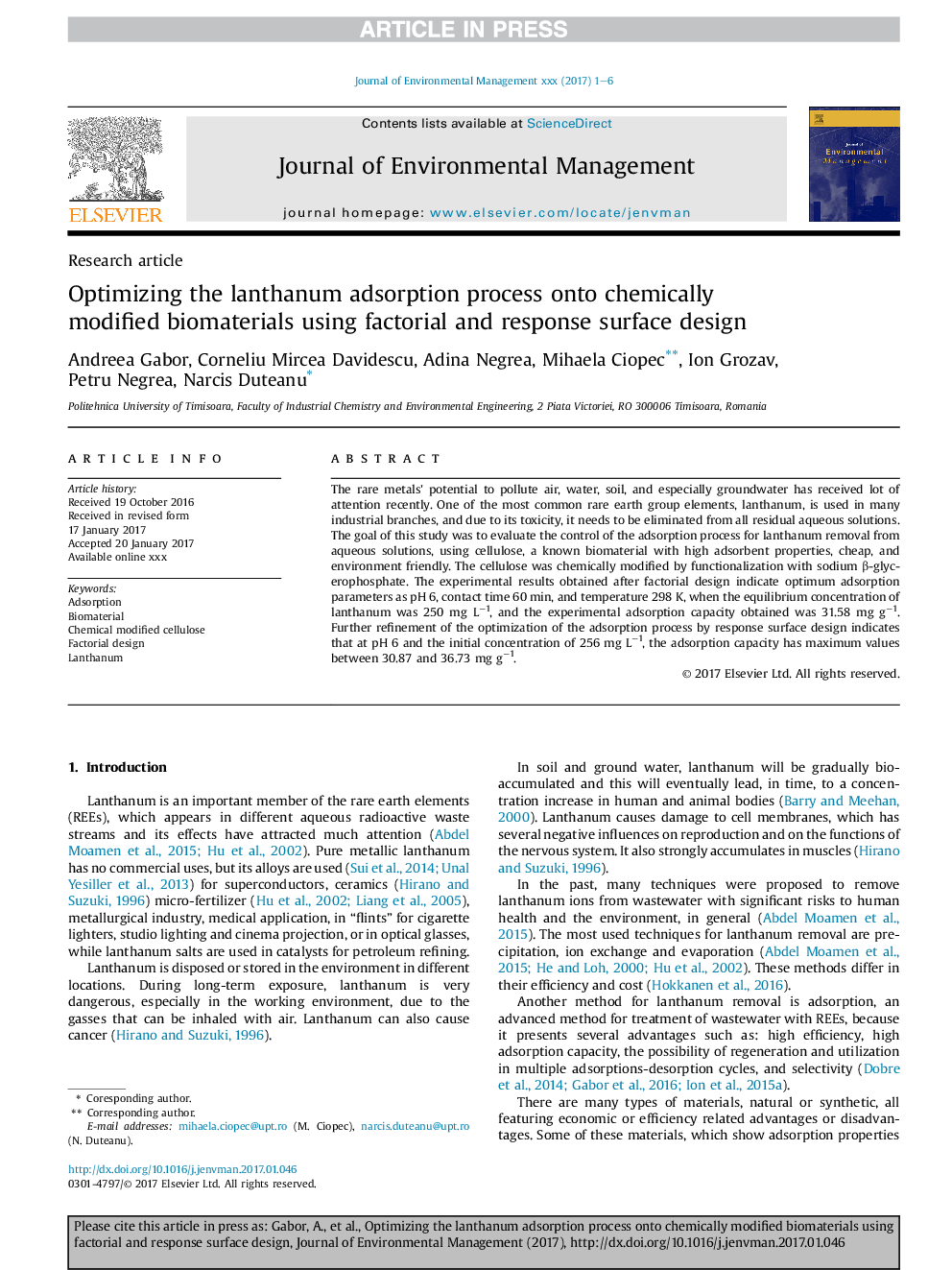| Article ID | Journal | Published Year | Pages | File Type |
|---|---|---|---|---|
| 7478709 | Journal of Environmental Management | 2017 | 6 Pages |
Abstract
The rare metals' potential to pollute air, water, soil, and especially groundwater has received lot of attention recently. One of the most common rare earth group elements, lanthanum, is used in many industrial branches, and due to its toxicity, it needs to be eliminated from all residual aqueous solutions. The goal of this study was to evaluate the control of the adsorption process for lanthanum removal from aqueous solutions, using cellulose, a known biomaterial with high adsorbent properties, cheap, and environment friendly. The cellulose was chemically modified by functionalization with sodium β-glycerophosphate. The experimental results obtained after factorial design indicate optimum adsorption parameters as pH 6, contact time 60 min, and temperature 298 K, when the equilibrium concentration of lanthanum was 250 mg Lâ1, and the experimental adsorption capacity obtained was 31.58 mg gâ1. Further refinement of the optimization of the adsorption process by response surface design indicates that at pH 6 and the initial concentration of 256 mg Lâ1, the adsorption capacity has maximum values between 30.87 and 36.73 mg gâ1.
Related Topics
Physical Sciences and Engineering
Energy
Renewable Energy, Sustainability and the Environment
Authors
Andreea Gabor, Corneliu Mircea Davidescu, Adina Negrea, Mihaela Ciopec, Ion Grozav, Petru Negrea, Narcis Duteanu,
